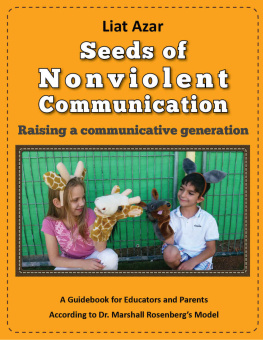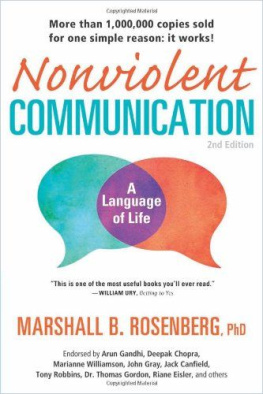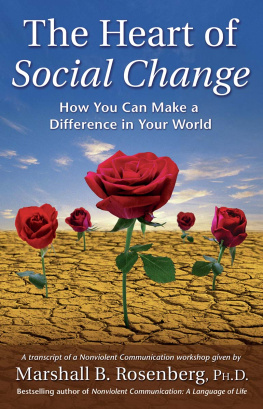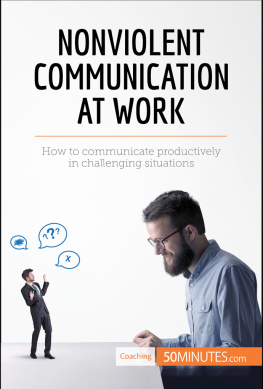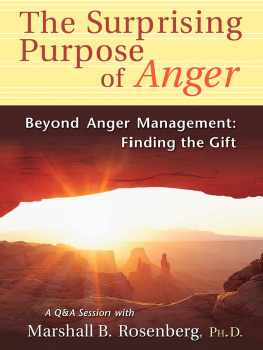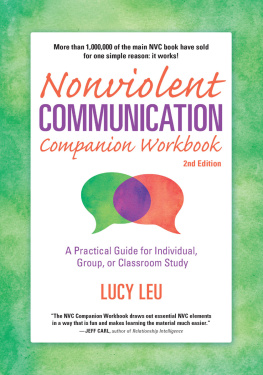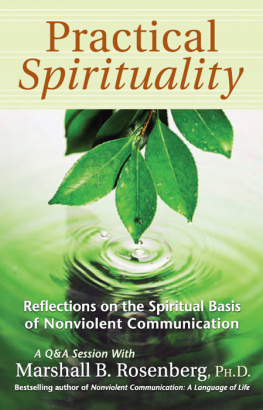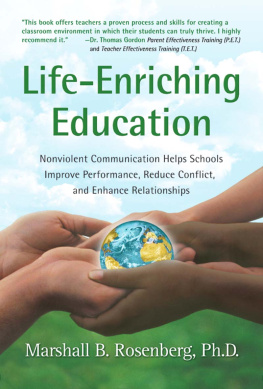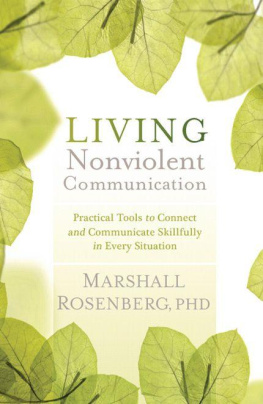Liat Azar - Seeds of Nonviolent Communication - Raising a communicative generation: A Guidebook for Educators and Parents According to Dr. Marshall Rosenberg’s Model
Here you can read online Liat Azar - Seeds of Nonviolent Communication - Raising a communicative generation: A Guidebook for Educators and Parents According to Dr. Marshall Rosenberg’s Model full text of the book (entire story) in english for free. Download pdf and epub, get meaning, cover and reviews about this ebook. year: 2016, publisher: Simple Story, genre: Home and family. Description of the work, (preface) as well as reviews are available. Best literature library LitArk.com created for fans of good reading and offers a wide selection of genres:
Romance novel
Science fiction
Adventure
Detective
Science
History
Home and family
Prose
Art
Politics
Computer
Non-fiction
Religion
Business
Children
Humor
Choose a favorite category and find really read worthwhile books. Enjoy immersion in the world of imagination, feel the emotions of the characters or learn something new for yourself, make an fascinating discovery.
- Book:Seeds of Nonviolent Communication - Raising a communicative generation: A Guidebook for Educators and Parents According to Dr. Marshall Rosenberg’s Model
- Author:
- Publisher:Simple Story
- Genre:
- Year:2016
- Rating:4 / 5
- Favourites:Add to favourites
- Your mark:
Seeds of Nonviolent Communication - Raising a communicative generation: A Guidebook for Educators and Parents According to Dr. Marshall Rosenberg’s Model: summary, description and annotation
We offer to read an annotation, description, summary or preface (depends on what the author of the book "Seeds of Nonviolent Communication - Raising a communicative generation: A Guidebook for Educators and Parents According to Dr. Marshall Rosenberg’s Model" wrote himself). If you haven't found the necessary information about the book — write in the comments, we will try to find it.
The book Seeds of Nonviolent Communication - Raising a communicative generation is a life-changing book with simple and easily-implementable tools, which create and improve the humane quality of all of lifes environments.
The book affords educators and parents the opportunity to learn how to create a non-violent relationship and dialogue through the model of Non-Violent Communication formulated by Dr. Marshall Rosenberg. It shows that it is possible to reduce violence, create closeness and to raise a generation who will know how to communicate. The strength of the approach is its ability to maintain a sense of togetherness and mutual empathy, without giving up on what is truly important to both sides.
Why is it worthwhile and important to learn to manage communication and family relationships in a nonviolent manner?
The basis of nonviolent communication is the understanding that all human behavior stems from an inner need that motivates us to act.
The book teaches:
What the needs are behind every behavior
Provides tools of how to talk differently, how to empathize, how to be a model for children and have a real presence
How to integrate practice and theory
How to implement the model into everyday life
How to enrich emotional vocabulary, which words to use to establish a connection and closeness to myself and others
Ideas for activities with children
How to implement the nonviolent language at home and in the educational framework through use of the jackal and giraffe puppets which Dr. Marshall used as a metaphor for nonviolent/violent communication.
The book is written with great faith and a desire to share and pass on my knowledge and experience as a mother, early childhood educator and moderator through natural giving.
My goal is not to change worlds, however in my life I have successfully influenced and changed several worlds.Order the book now!
Liat Azar: author's other books
Who wrote Seeds of Nonviolent Communication - Raising a communicative generation: A Guidebook for Educators and Parents According to Dr. Marshall Rosenberg’s Model? Find out the surname, the name of the author of the book and a list of all author's works by series.

